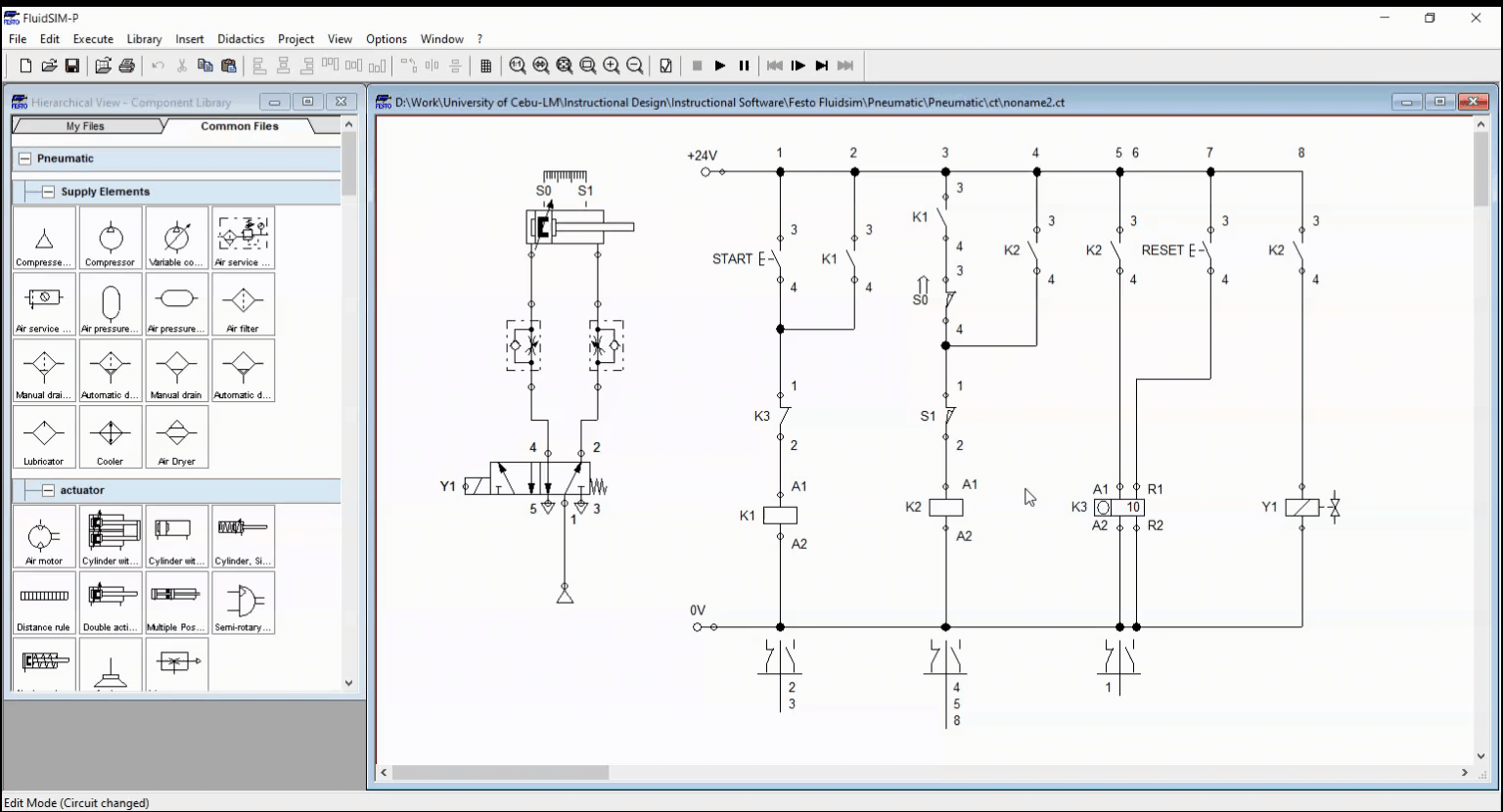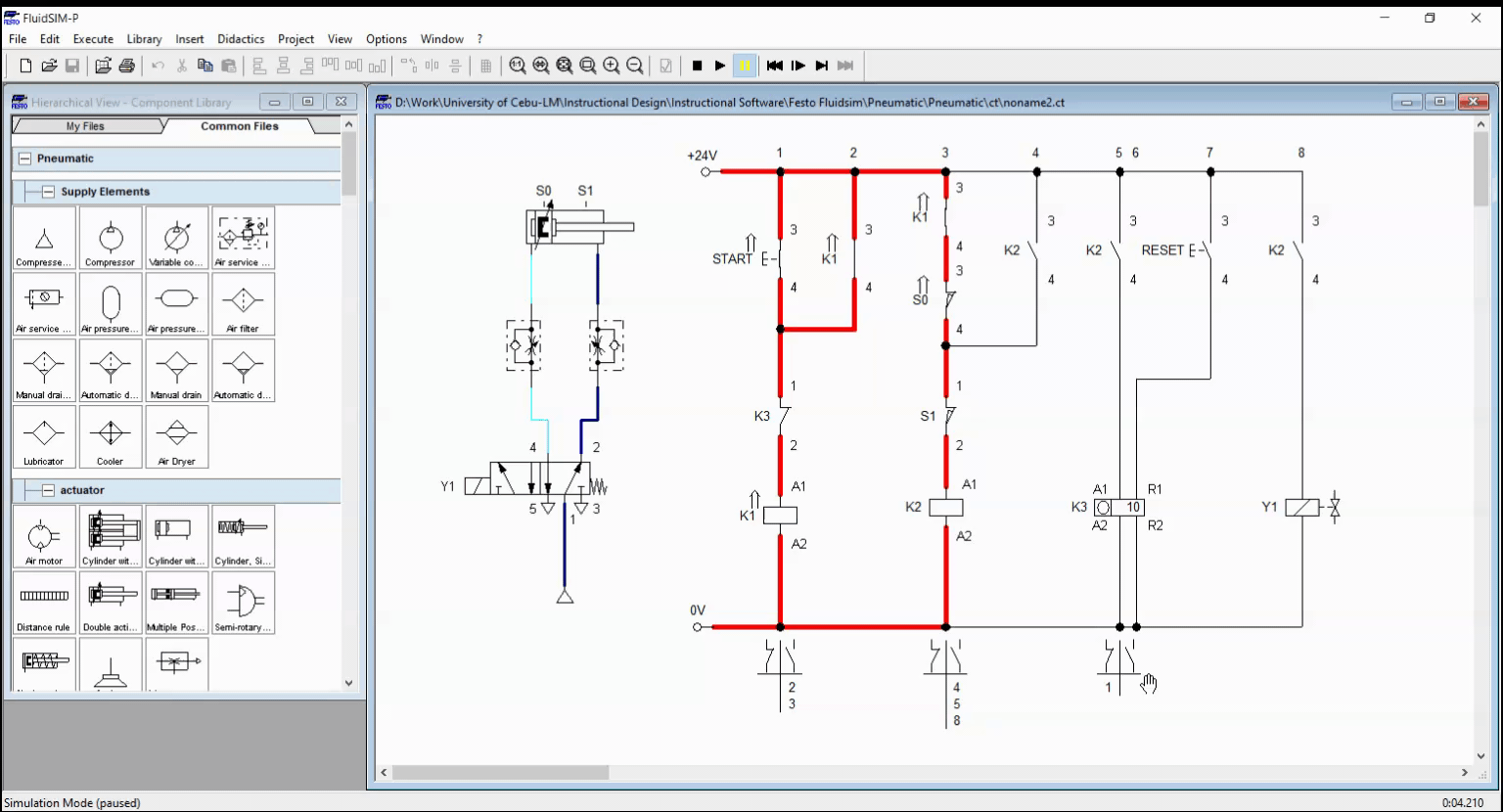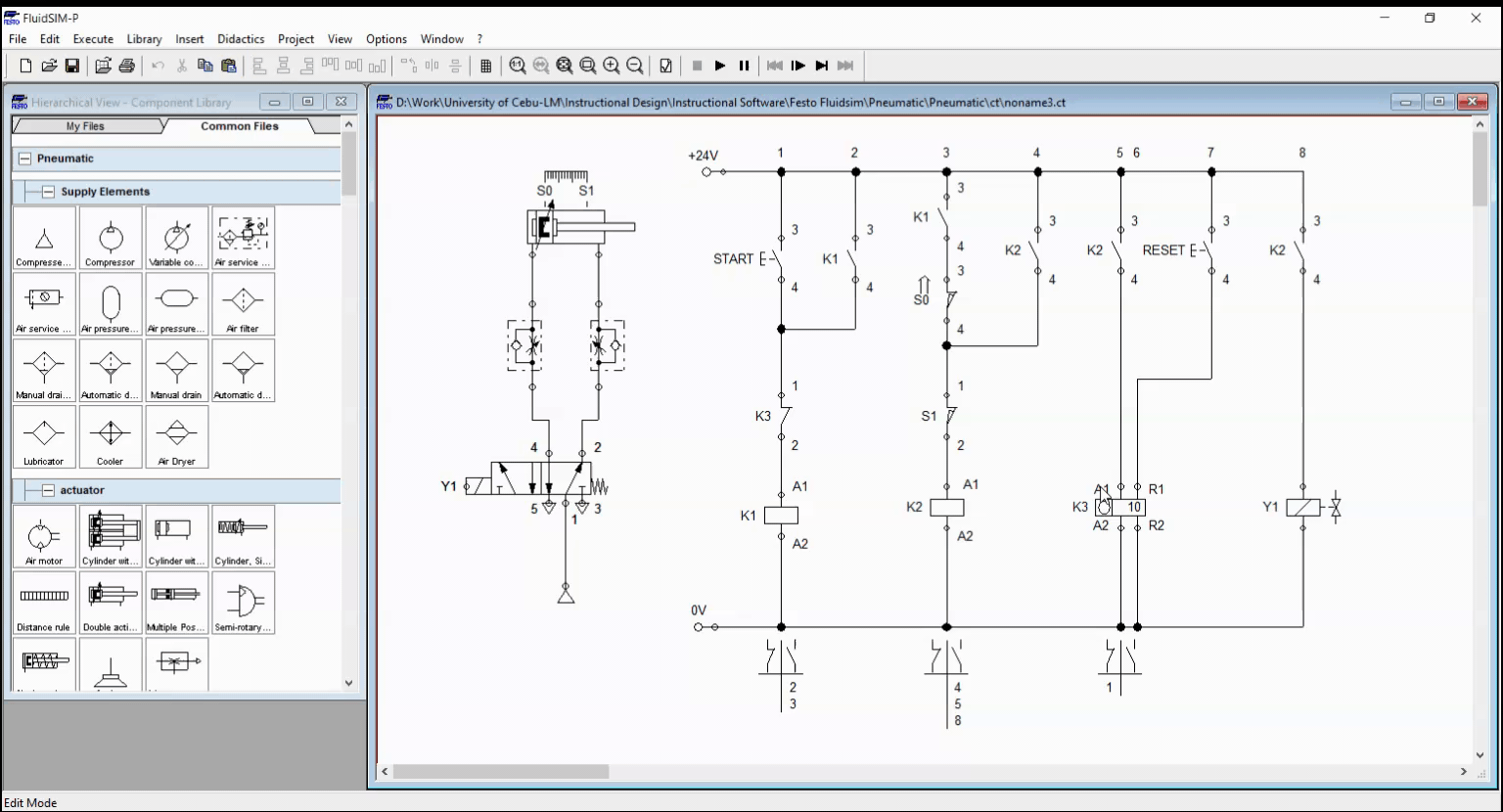Electro-pneumatic Basics: Automation with Counter
1. Introduction
In the previous blogs, we explain on how to automate in electro-pneumatic. In this blog, we dig deeper on basic automation and explain automation with counter. A counter specify on the number of repetition to be done before it fully stop. In previous blog, we need to press a stop button for the actuation to fully stop. With counter, the actuation stop at the instance set repetition was achieved. In this blog, we used scenario or problem at hand to implement a circuit that automate with a counter. The scenario or problem is described as:
Metal components are to be cleaned in an acid bath. These components are placed in a basket which is hung from a hook on a double-acting cylinder. A single actuation of a pushbutton causes the basket to be continuously lowered into and pulled out of the acid bath. The sequence stops automatically after 10 cycles. Sensors S0 and S1 check the fully retracted and extended positions, respectively, of the cylinder.
The problem specified the number of cycles the dipping of metal in an acid bath. The metal is deep in the acid bath by a double-acting which retracts and extends by 10 cycles. The circuit and the simulation is presented with details in next sections.
2. Circuit and Simulation
The pneumatic circuit is similar to the previous blog. It consist of a double acting cylinder that simulates the dipping of metal in an acid bath and a flow control valve to control the speed of the cylinder. To control the double-acting cylinder, we set up a single solenoid, 5/2 directional control valve with spring return. The system is supplied with a compressed air. The electrical control circuit are composed of a couple of push buttons, a relay, a counter and a solenoid. The solenoid linked the control and the pneumatic actuation.

Figure 1: Electro-pneumatic circuit for Automatic Washing with counter.
When the start button is pressed, the current flow to the relay coil K1 which shifted the state of all K1 contacts. The latching at step 2 sustain the activation of relay K1. All K1 contact, which is normally open, closes and enables the other relays. This is shown in Figure 2.

Figure 2: Start button is pressed and relay K1 activates.
After K1 is activated, relay K2 is energized as sensors maintain initial state. Sensor S0 acknowledged the cylinder is fully retracted while sensor S1 detects the cylinder is fully extended. When K2 is energized. All contact K2 changed from normally open to closed position. This eventually activates the relay counter K3 after 10 cycles.

Figure 3: K2 is activated.
With relay K2 is activated, solenoid Y1 is activated. The solenoid Y1 actuates the 5/2 way directional control valve. The 5/2-way DCV opens port 4 for the air to flow in the double-acting cylinder. The cylinder extends. As the cylinder reached full extension, sensor S0 and S1 opens that caused the cylinder to retract as relay K2 is deactivated. Once K2 is deactivated, cylinder reached full retraction and sensor S0 closes. The process repeats as long as the counter condition is not achieved. When counter K3 is activated, the K3 contact changed state and cuts the current to the relay K1. For the scenario, the counter is set to 10 cycles. The full simulation is shown in Figure 4.

Figure 4: Full Simulation
Lastly, the reset button in the circuit is used to revert the system to initial state, and the counter back to full counts. Without pressing the reset button, the system do not actuates.
3. Conclusion
We created a basic automation circuit with counter, shown in Figure 1. Repeating a process in a specific number of cycles is done by integrating a counter to the basic automation circuit in electro-pneumatic. The counter stops the system once the set number of repetition is achieved. In this blog, we create a circuit for an automatic washing system with counter that shows how to configure a basic automated process with a specific number of repetition in electro-pneumatic.
4. References
[1] Pneumatic Basic Level. online access
[2] Pneumatic Advanced Level. online access
[3] Electro-pneumatic Basic Level. online access
(Note: All images and diagram in the text are drawn by the author (@juecoree) except those with separate citation.)
If your are Interested in pneumatic and electro-pneumatic system, you can read:
1. Pneumatic Basics: Direct Control
2. Pneumatic Basics: Indirect Control
3. Pneumatic Basics: AND and OR Logic
4. Pneumatic Basics: Memory Circuit and Speed Control
5. Pneumatic Basics: Dependent control
6. Pneumatic Basics: Multiple Actuators
7. Electro-pneumatic Basic: AND and OR Logic
8. Electro-pneumatic Basics: Interlocking, Latching and XOR logic
9. Electro-pneumatic Basics: Distribution of Workpiece
10. Electro-pneumatic Basic: Ejecting a workpiece
11. Electro-pneumatic Basics: Basic Automation
Posted with STEMGeeks